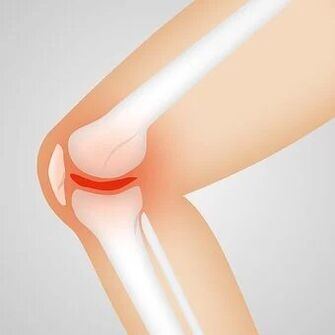Arthritis (osteoarthritis) is a non-inflammatory pathology Joints are characterized by degeneration of articular cartilage, hypertrophy of the edges of bone tissue, and changes in the synovial membrane. In most cases, this pathology occurs in the elderly.
Joints are characterized by degeneration of articular cartilage, hypertrophy of the edges of bone tissue, and changes in the synovial membrane. In most cases, this pathology occurs in the elderly.
Arthritis and arthritis
Don't confuse arthritis and arthritis. In some sources, you can see that arthritis may be different from arthritis because the former is a non-inflammatory disease, while the latter is caused by inflammation. In fact, arthritis is a collective (umbrella term) that includes osteoarthritis, rheumatoid arthritis and gout.
Causes of arthritis
Arthritis is a fairly common disease. According to some reports, more than 70% of people over 70 have some symptoms of arthritis. Although the incidence of arthritis increases with age, the disease is not only caused by the aging of joint tissues. Joint damage and other factors can accelerate the development of pathology. These include:
- Osteoporosis
- Overweight
- Postmenopausal women;
- Various metabolic disorders;
- Endocrine disease
- Micronutrient deficiency;
- Genetic predisposition
- Congenital disease of joint formation (dysplasia);
- Joint damage;
- Regular minor trauma;
- Exposure to certain toxins;
- Surgery was performed on joints, etc.
Pathology can be primary and secondary. If the cause is unknown, the joint disease is called primary (or idiopathic). If the disease is caused by trauma, metabolic disorders, endocrine diseases, etc. , it is considered secondary.
Stages of arthritis
This disease is divided into 3 stages:
- There is no obvious joint histopathology. Changes in synovial membrane and synovial fluid composition were observed.
- The cartilage and meniscus began to deteriorate. Osteophytes (pathological growth at the edges) can occur on the bones.
- It is characterized by significant joint deformation, pathological mobility or stiffness, and chronic pain (however, the symptoms of the latter are usually also characteristic of the previous stage).
Pathological location and symptoms
Arthritis usually affects the joints of the hand, including the distal interphalangeal joints, the proximal interphalangeal joints, and the metacarpophalangeal joints of the thumb. Other joints that are often affected by the disease include the cervical spine, waist, hip, knee, and first meta toe joints. Osteoarthritis is less common in the ankles, wrists, elbows, and shoulders (in this case, it usually has a secondary cause). The clinical manifestations of pathology usually include the following symptoms:
- History of joint pain;
- Deterioration of joint function;
- swelling.
The pain usually develops gradually and usually lasts for several years. Painful outbursts may be accompanied by partial or complete relief. Pain usually occurs during joint movement and subsides during rest, at least until the disease progresses to a more severe stage. After resting for a period of time, the joints usually feel stiff in a short period of time. It usually disappears within a few seconds or minutes of exercise. In most cases, symptoms appear in the elderly, and in people under 40 years of age, arthritis usually develops asymptomatically.
Arthropathy treatment
Conservative treatment of arthritis
- Rest and avoid overwork;
- Weight loss (reducing joint pressure);
- Physical therapy, such as exercise therapy;
- Auxiliary tools, such as walking sticks, elastic knee support;
- Use anti-inflammatory drugs wisely.
In addition, patients often receive hydrotherapy treatments.
Surgical treatment of arthritis
Knee replacement
Replacement joint replacement
prevention
In order to minimize the risk of developing arthritis, it is necessary to maintain adequate physical exercise and timely treatment of joint biomechanics injuries, congenital and acquired abnormalities (such as correction of flat feet). Similarly, prevention methods include reducing excess weight (which increases pressure on the joints).






























